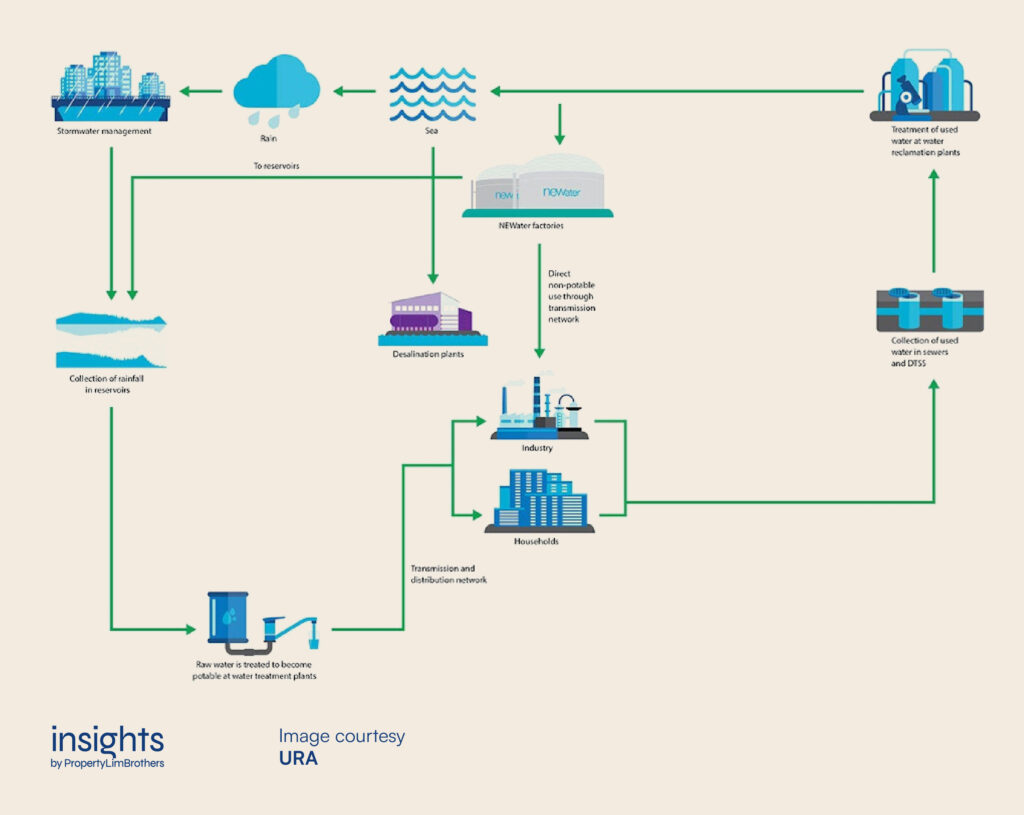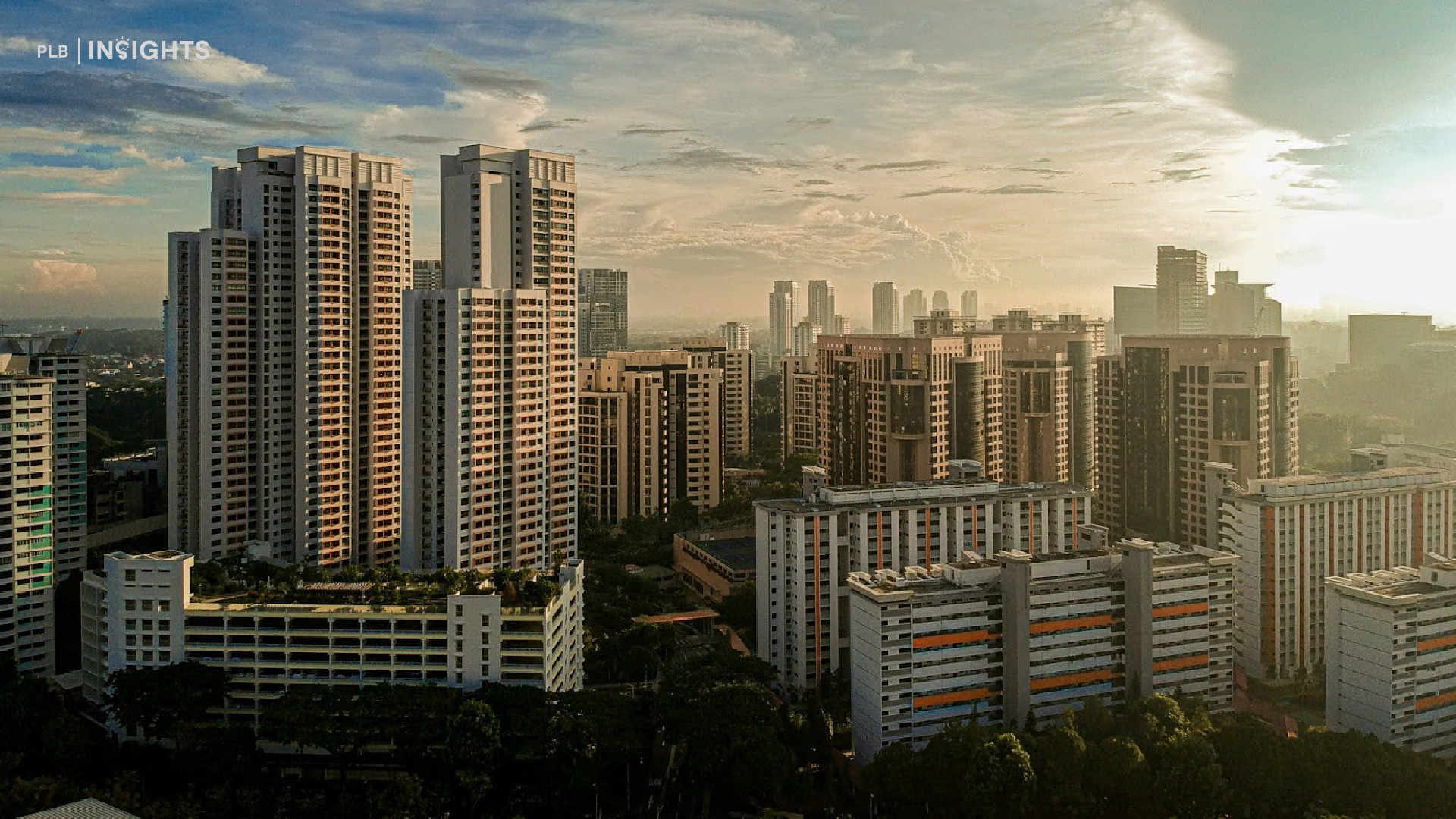
Singapore is planning on hitting net-zero by the middle of the century. At COP26, Singapore doubled down on their commitments to deal with climate change on the international stage. This shouldn’t come as a surprise as global leaders get increasingly concerned about the impacts of climate change.
Being an island city, there are plenty of reasons to be worried about climate change. Rising sea levels can easily engulf our tiny island. Imagine having to leave your HDB in a kayak, and row yourself to the nearest MRT or ferry station. Many coastal cities are threatened by the impacts of climate change. On top of rising sea levels, rising temperatures can disrupt daily living in more than the literal way.
Eventually, the impacts of climate change can snowball and reverberate across natural ecosystems and global supply-chains. Food security, water security, energy security. These will be keywords that might pop up more and more often over the course of the decade. While the impacts might not be felt immediately, it is imperative that Singapore builds capabilities to be resilient against such impacts.
How can Singapore reduce its carbon footprint and become more resilient against climate change in the coming years and decades? This issue has permeated through the top levels of government and the URA has included it in the long-term plan shared with the public. In this article, we will share what is planned for Singapore to become climate resilient.
Upgrading our Resource Systems for Climate Resilience
There is no easy way to decarbonise a modern city. Society in the twenty first century is basically built on and reliant on fossil fuels and carbon. Businesses, jobs, buildings, infrastructure. Pretty much everything leaves a carbon footprint. The systems that we use, the technologies that we put into place, all use energy and perhaps that is where Singapore should start.
Singapore is heavily investing in cleaner alternatives to fossil fuels. From the infrastructure perspective, Singapore is planning the future with Smart Energy Grids to help manage the increasingly complex infrastructure needed to include emerging low-carbon alternatives into our daily lives.
As we speak, businesses and some private homes have taken the initial leap to go net zero by using solar power for their daily needs. With public homes and transport infrastructure rapidly adopting the use of solar and alternative clean energy, it becomes clear that we need the proper energy grid to support and store clean energy.
Smart Grids that help us manage the complexity of clean energy usage and production will be the backbone of the future city. Without the proper infrastructure in place, society at large will probably fall back on the usage of fossil fuels simply because of how much more convenient and cheaper it is. The energy grid is key to the success of low-carbon energy usage in our daily lives.
Apart from our energy systems, a key part of leading sustainable lives is managing the consumption and waste patterns of society. Waste management systems would need to be revised to integrate the sustainability goals of Singapore.
Consuming and producing sustainably are the obvious parts of a low-carbon society. By reducing consumption to sustainable levels, we intuitively reduce wastage and only produce what we need to consume. How should waste – that is inevitably produced from human activities – be managed then?
As part of Singapore’s sustainable waste and resource management system, waste is used in part to produce energy. Waste-to-Energy facilities help to squeeze the remaining value out of these waste resources. The by-products of waste processing – the incineration bottom ash (IBA) is used to produce NEWSand, a material that can be used in road construction.
By innovatively finding new use cases for repurposed waste materials, Singapore can close its waste loop and better manage its waste. This increases the lifespan of the land resources we use to manage the waste products, such as Semakau island which is used as a landfill for the end products of the waste management process.
While thinking of waste as a resource is a mind bending solution, managing our water resources is then the opposite and also (arguably) the most vital system. Water security was a hot topic of the past, with multiple water disputes with our neighbours providing the raw water for treatment. As the essence of life, our water supply and security should never be taken for granted.
Singapore has been consistently and continuously improving its water security over time. The diversification of raw water supply has expanded to taking advantage of stormwater from rain and sea. The improvement of water treatment technologies would mean more ways of producing clean water.
Singapore’s Deep Tunnel Sewerage System would help make large scale water recycling a reality in Singapore. More treatment plants, water infrastructure and efficient technology are planned to be in place to secure our water needs. In addition, water catchment systems are planned to have solar capture capabilities to help the system achieve net-zero in the near future.
By revising and improving our energy, waste, and water infrastructure and systems, Singapore looks to future-proof itself against the impacts of climate change. This is a big and unified leap on going low-carbon and being climate resilient. In some sense, it is a political and policy miracle that we are able to take such firm steps into futurising Singapore’s core infrastructure.
Reclaiming Land & Protecting our Shores
The journey to net-zero and climate resilience does not stop at just improving our existing systems and infrastructure. With the threat of rising sea levels being very real, Singapore cannot allow itself to lose already scarce land supplies. Over the course of time, Singapore has taken aggressive steps to protect its shores. From land reclamation to the usage of protective infrastructure of dykes & revetments, Singapore is implementing a mix of strategies to protect different parts of the coastline.
Singapore has also moved to more creative projects in the quest for climate resilient land resources. More recently, interesting ways to use our limited land resources have been implemented. In the case of Jurong Caverns, one way we can unlock land resources is to look at creating more space underground.
Jurong Caverns was opened in 2014 as an oil storage facility the size of 84 football fields. These huge underground spaces are a creative way to multiply the amount of space we have for developments across the island. Singapore has been making good use of its underground spaces. From subways to storage facilities, these underground facilities help to free up surface space for residences and commercial spaces.
Land reclamation projects are commonplace in Singapore. Long Island will be a huge project spanning over 15km in the Marina East area. Doubling as a form of coastal protection, Long Island will seek to provide for housing and recreational needs as well. As the demand for land in the city centre and city fringe intensifies, it will not be a surprise to see more land being reclaimed in the future.
The polder project on Pulau Tekong is another example of coastal protection. Rather than reclaiming land completely and putting up barrages to protect the reclaimed land, polder is a low-cost form of land reclamation and reduces the amount of sand needed for land reclamation.
This is a move to reduce the reliance on sand as a raw material for land reclamation. As we have seen, bans of sand exports to Singapore in Indonesia, Cambodia, and Malaysia. Perhaps it might also be a hedge against the ban on sand exports for Singapore’s sand providers in the future. At the moment, Singapore is close to being one of the top importers of sand in the world. It is prudent to diversify the sources of sand imports as well as how sand is used in land reclamation.
The polder development on Pulau Tekong seeks to protect the coast from rising sea levels. With less sand used for the infill and more for the sand bund protecting the island from the sea, the polder will be able to increase the height of the seawall whilst doing so with less sand. We might see more of these polders around Singapore should the development in Tekong work out to be a success.
Another way Singapore can free up space on land is to have floating energy storage systems. This project by EMA and Keppel Offshore & Marine is looking to produce Singapore’s first floating energy storage system. With a novel battery stacking solution that looks to reduce the use of land by 40%.
This ambitious project would be a hit in freeing up precious land in Singapore while simultaneously working together with the future Smart Grid System of Singapore. These new and creative ways of freeing up land and protecting our coastline will go a long way in helping Singapore achieve its climate resilience goals.
Building Right, From the Start
So far, many of the solutions involve the improvement of systems and protecting and freeing up the land we already have. While these solutions are much needed ways of achieving climate resilience and a low-carbon city, future developments across Singapore will need to be built right. Especially from the starting design stages, material sourcing, and construction all the way through to the way we live and work in the spaces.
One of the problems Singapore is facing that will get worse is the issue of urban heat. The effects of global warming will worsen the heat around urban areas in Singapore. As we can see on the heat map below, the built up areas in the city centre and city fringe suffer more. Built up concrete areas trap heat during the day, increasing the cost it takes to cool down buildings and living spaces. This is known as the Urban Heat Island Effect
To better manage heat in urban areas, city spaces need to be more sustainably designed. As you might have noticed, more and more buildings in the CBD are starting to incorporate greenery into the facade of the building. Others have included more inlets for natural light to reduce energy usage of the building.
In terms of a sustainable design of city space, the image above shows us how vertical spaces need to be punctuated with buildings being more permeable to improve airflow. Intuitively, cooler materials with lower heat capacity would also help the city reduce the heat absorbed during the day. Innovation in the field of city planning and construction materials would greatly aid the heat problem in Singapore.
Jurong Lake District will be one of the prototypes of a sustainably designed city space. Sustainability is one of the core themes of this future city space. Jurong Lake District is planning to be a green innovation hub. With mixed land usage for commercial activities, residences and retail. Being located between NTU and NUS sets this area up for success with potential collaborative opportunities with the top researchers in Asia.
Closing Thoughts
It isn’t easy to plan a city, and even more difficult to take it in the right direction. Amazingly, URA has taken a strong and solid stance on city planning for better. Prioritising social inclusion, well-being, with a sustainable approach is the key to the successful future-proofing of the Singapore miracle.
This would of course mean that residents must also adopt sustainable ways of living and working. Despite grim projections from climate change, there is still hope yet for the next generation. As Singapore leads the charge in urban planning and city design for climate resilience, residents stand to gain from a better living environment.




















